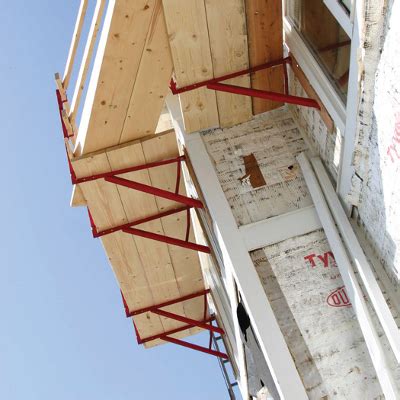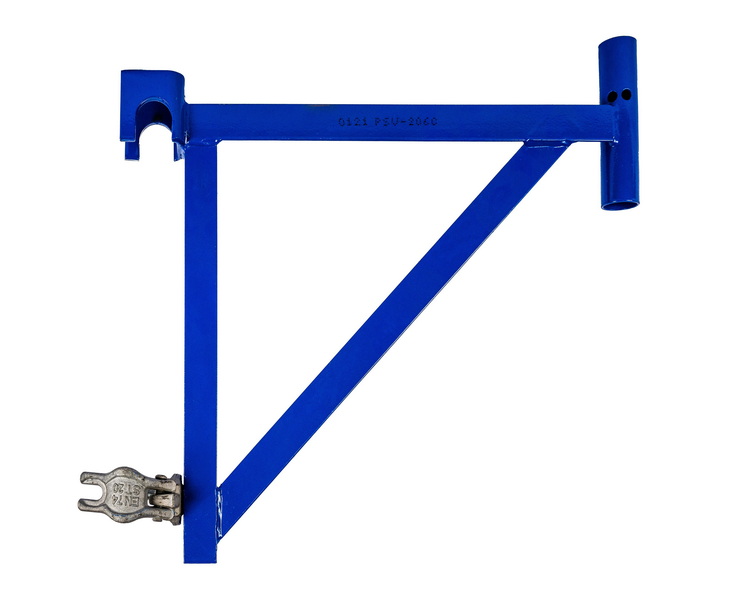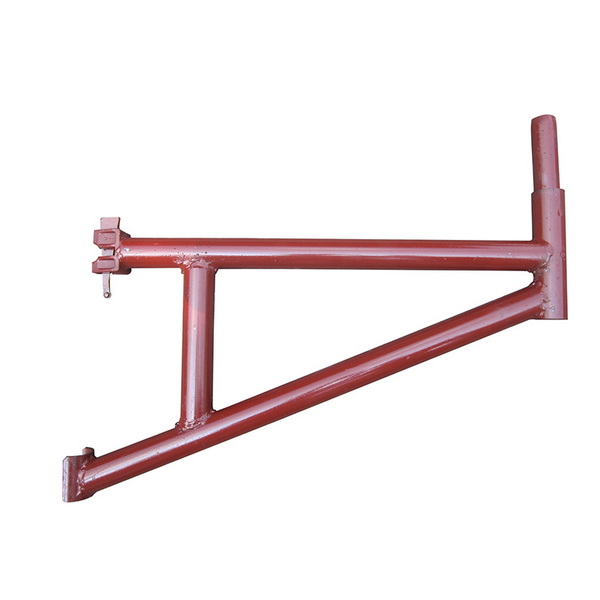Content Menu
● Understanding Bracket Scaffold Systems
>> Key Components
>> Advantages of Bracket Scaffold Systems
● Enhancing Safety on Construction Sites
>> Fall Protection
>> Stability and Load Capacity
>> Safe Access
● OSHA Compliance and Safety Regulations
>> Key OSHA Requirements
>> Best Practices for Scaffold Safety
● Conclusion
● FAQ
>> 1. What is a bracket scaffold system?
>> 2. How do bracket scaffolds enhance safety compared to other scaffolding types?
>> 3. What are the key OSHA requirements for bracket scaffold systems?
>> 4. What should be included in a scaffold inspection checklist?
>> 5. How often should bracket scaffolds be inspected?
● Citations:
Construction sites are inherently dangerous environments. Working at height poses significant risks, making safety a paramount concern. Among the various scaffolding solutions available, the bracket scaffold system stands out as a method to enhance safety on construction sites. This article explores how bracket scaffold systems improve safety, their essential components, compliance with safety regulations, and best practices for their use.

Understanding Bracket Scaffold Systems
A bracket scaffold system is a type of supported scaffold where the platform is supported by brackets attached to a wall or other vertical structure[1]. These brackets, typically made of steel, are designed to hold a working platform securely, providing a safe and stable surface for workers[1]. Unlike traditional scaffolding that relies on vertical supports resting on the ground, bracket scaffolds are affixed to the building itself, making them suitable for various construction, maintenance, and renovation tasks[1].
Key Components
Understanding the key components of a bracket scaffold system is essential for ensuring its safe and effective use[1]. These include:
-Brackets: The main support structures that attach to the wall and hold the platform[1].
-Platforms: The working surface where workers stand and place their materials[1].
-Guardrails: Protective barriers installed along the edges of the platform to prevent falls[1].
-Toeboards: Low barriers at the base of the platform to prevent tools and materials from falling[1].
-Attachment Devices: Bolts, welds, or other mechanisms used to securely attach the brackets to the wall[1].
Advantages of Bracket Scaffold Systems
Bracket scaffold systems offer several advantages that contribute to improved safety on construction sites:
-Stability: By attaching directly to the structure, bracket scaffolds offer enhanced stability compared to freestanding scaffolds[1].
-Accessibility: They provide easy access to specific areas of a building, making them ideal for facade work, painting, and repairs[1].
-Reduced Ground Obstruction: Because they don't rely on ground supports, bracket scaffolds minimize obstruction at ground level, allowing for better movement of equipment and personnel.
-Ease of Installation: Bracket scaffold systems are relatively quick to install and dismantle, saving time and labor costs.
Enhancing Safety on Construction Sites
The primary benefit of using bracket scaffold systems is the enhanced safety they provide on construction sites. Several factors contribute to this improved safety.

Fall Protection
Falls are a leading cause of injury and fatality in the construction industry. Bracket scaffold systems incorporate multiple fall protection measures to mitigate this risk[5].
-Guardrails: OSHA (Occupational Safety and Health Administration) mandates the use of guardrails on scaffold platforms that are more than 10 feet above the ground[1]. These guardrails typically consist of a top rail, mid-rail, and posts, providing a barrier to prevent workers from falling[1].
-Toeboards: Toeboards are installed at the base of the platform to prevent tools, equipment, and materials from falling and potentially injuring workers below[1].
-Personal Fall Arrest Systems (PFAS): In addition to guardrails and toeboards, workers should use personal fall arrest systems, such as harnesses and lanyards, when working on bracket scaffolds[1]. These systems provide an additional layer of protection in the event of a fall.
Stability and Load Capacity
The stability of a scaffold is critical for ensuring worker safety. Bracket scaffold systems are designed to provide a stable and secure working platform[1].
-Secure Attachment: Brackets must be securely attached to the wall or structure to prevent dislodgement[4]. This can be achieved through bolting, welding, or other appropriate methods, depending on the nature of the wall[2].
-Load Capacity: Each bracket scaffold must be capable of supporting at least four times the intended load[2]. This "safety factor" ensures that the scaffold can withstand the weight of workers, materials, and equipment without collapsing[1].
-Proper Spacing: Brackets should be spaced at appropriate intervals to ensure even weight distribution and prevent overloading[2][4]. OSHA and other regulatory bodies specify maximum spacing requirements to maintain structural integrity[2].
Safe Access
Providing safe access to the scaffold platform is another critical aspect of scaffold safety[7].
-Ladders and Stairways: Workers should use ladders or stairways to access the platform, rather than climbing on the scaffold structure itself[1]. Ladders should be secured to prevent slipping, and stairways should have handrails for added safety.
-Proper Placement: Access points should be strategically placed to minimize the distance workers need to travel on the scaffold[1].
-Regular Inspections: Ladders and stairways should be regularly inspected to ensure they are in good condition and safe for use[5].
OSHA Compliance and Safety Regulations
Compliance with OSHA regulations and other safety standards is essential for ensuring the safe use of bracket scaffold systems[5].
Key OSHA Requirements
OSHA provides comprehensive guidelines for scaffold safety, including specific requirements for bracket scaffolds[1]. Some of the key requirements include:
-Guardrail Systems: Platforms higher than 10 feet must have guardrail systems[1].
-Fall Protection: Workers must use personal fall arrest systems when guardrails are not feasible or do not provide adequate protection[1].
-Load Capacity: Scaffolds must be capable of supporting four times the maximum intended load[2].
-Inspections: Scaffolds must be inspected by a competent person before each work shift and after any event that could affect their structural integrity[5].
-Training: Workers must be trained on the proper use of scaffolds, including hazard recognition, fall protection measures, and load capacity limits[5].
Best Practices for Scaffold Safety
In addition to complying with OSHA regulations, construction companies should implement best practices for scaffold safety[5]. These include:
-Regular Inspections: Conduct regular inspections of the scaffold to identify and address any potential hazards[5].
-Proper Training: Provide comprehensive training to all workers who will be using the scaffold[5].
-Competent Person: Designate a competent person to oversee the erection, dismantling, and inspection of the scaffold[5].
-Fall Protection Measures: Ensure that all necessary fall protection measures are in place and properly used[1].
-Load Management: Monitor the load on the scaffold to prevent overloading[2].
-Weather Conditions: Avoid using scaffolds in adverse weather conditions, such as high winds or heavy rain[1].
-Secure all components: Ensure that decks, planks, brackets, toeboards, and tubes are rigidly installed and that all connections are tightly secured[8].
Conclusion
Bracket scaffold systems significantly improve safety on construction sites by providing a stable, accessible, and secure working platform. By understanding the key components, adhering to safety regulations, and implementing best practices, construction companies can minimize the risk of accidents and ensure a safer work environment for their employees. The use of guardrails, toeboards, and personal fall arrest systems, combined with regular inspections and proper training, makes bracket scaffold systems a reliable choice for working at height. Embracing these safety measures not only protects workers but also contributes to the overall success and efficiency of construction projects.

FAQ
1. What is a bracket scaffold system?
A bracket scaffold system is a type of supported scaffold where the platform is supported by brackets attached to a wall or other vertical structure. These brackets provide a stable and secure working surface for workers at height[1].
2. How do bracket scaffolds enhance safety compared to other scaffolding types?
Bracket scaffolds enhance safety through their direct attachment to the structure, providing enhanced stability, reduced ground obstruction, and easy access to specific areas[1]. They also allow for effective implementation of fall protection measures such as guardrails and personal fall arrest systems[1].
3. What are the key OSHA requirements for bracket scaffold systems?
Key OSHA requirements include the use of guardrail systems for platforms higher than 10 feet, fall protection measures, adherence to load capacity limits, regular inspections by a competent person, and comprehensive worker training[1].
4. What should be included in a scaffold inspection checklist?
A scaffold inspection checklist should include verification of proper guardrail installation, secure bracket attachments, appropriate platform load, the absence of damaged components, and the stability of access points[5].
5. How often should bracket scaffolds be inspected?
Bracket scaffolds should be inspected by a competent person before each work shift and after any event that could affect their structural integrity, such as high winds or heavy rain[5]. Regular inspections help identify and address potential hazards promptly.
Citations:
[1] https://scaffoldtype.com/scaffold-brackets/
[2] https://ohs.guide.constructionsafetyns.ca/topic/scaffolding/
[3] https://www.worksafenb.ca/general-resources/publications/hazard-alerts/safe-use-of-carpenters-bracket-scaffolds
[4] https://search-ohs-laws.alberta.ca/legislation/occupational-health-and-safety-code/part-23-scaffolds-and-temporary-work-platforms/
[5] https://www.bracingsystems.com/osha-scaffold-requirements-best-practices
[6] https://www.ihsa.ca/rtf/health_safety_manual/pdfs/equipment/Scaffolds.pdf
[7] https://www.osha.gov/sites/default/files/publications/osha3150.pdf
[8] https://www.scaffoldingsolutions.com/articles/11-scaffolding-safety-tips/






















